Japandi bedroom design effortlessly merges the elegance of Japanese minimalism with the warmth of Scandinavian comfort, creating a tranquil space that feels both serene and inviting. Imagine walking into a room where every element, from the soft linen bedding to the clean lines of a wooden platform bed, evokes calm and simplicity. This blend of cultures emphasizes natural materials, neutral tones, and a decluttered environment, turning your bedroom into a sanctuary of peace. In a world that's constantly buzzing with activity, these 25 beautiful Japandi-style bedroom design ideas offer a much-needed retreat where less is truly more.

1. Minimalist Bedding for a Calm Atmosphere
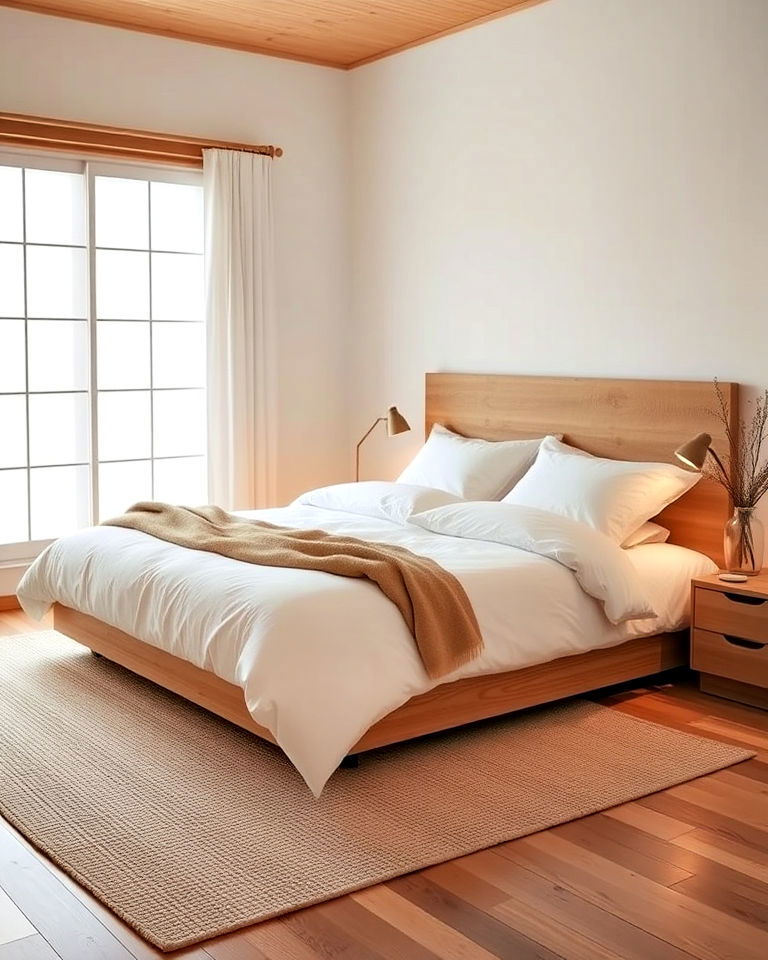
In Japandi design, simplicity is key, and incorporating minimalist bedroom ideas can create a serene bedroom atmosphere. Opt for low-profile platform beds with neutral, solid-colored linens in shades of white, beige, or gray. The clean lines and lack of excessive pattern keep the room feeling uncluttered and peaceful, making it an ideal space for rest and relaxation. This approach blends Japanese minimalism with Scandinavian coziness, balancing function and style in the bedroom.
2. Natural Materials to Bring the Outdoors In
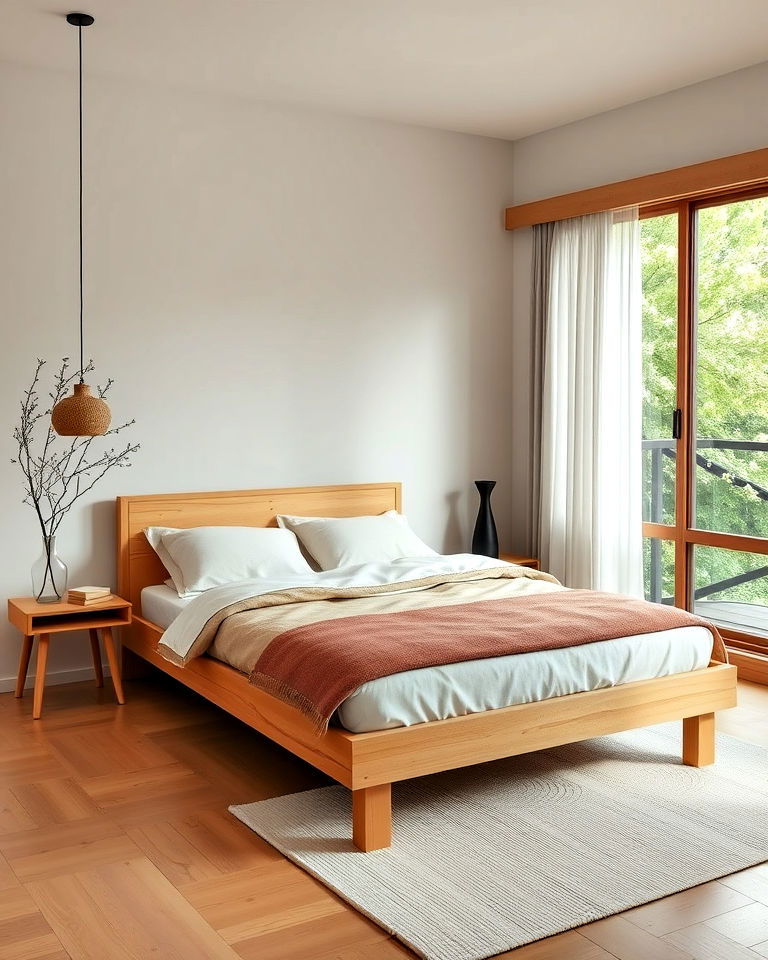
By using natural materials like wood, including ideas similar to wood bathroom floors, you can bring the calming essence of nature into your Japandi bedroom. Wooden bed frames, bamboo window shades, and stone accents add a tactile warmth to the space, while maintaining the simplicity that defines the Japandi style. These elements also reinforce the connection to nature, which is central to both Japanese and Scandinavian design principles.
3. Earth-Toned Color Palette for Warmth
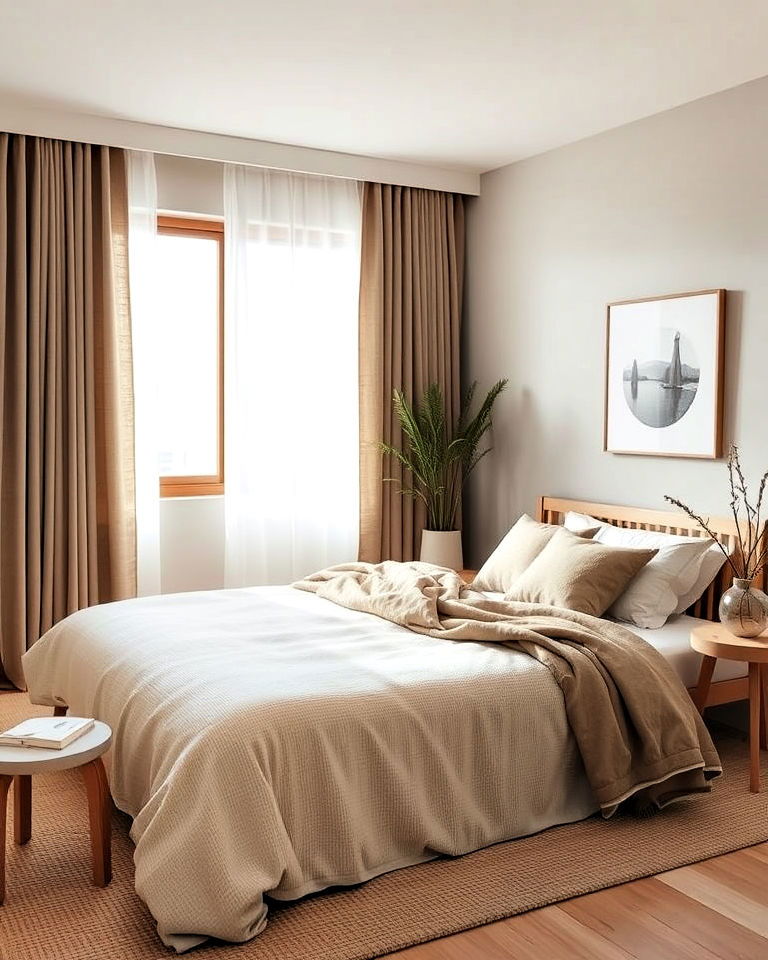
Discover calming Japandi bedroom ideas for a minimalist, cozy retreat. Neutral bedroom ideas with an earth-toned color palette are essential in Japandi bedroom designs, as they exude warmth and tranquility. Soft shades like beige, taupe, and clay create a cohesive look that feels both grounded and airy. These natural hues are reminiscent of Scandinavian simplicity, while also evoking the zen-like calm of traditional Japanese interiors, making the room a peaceful retreat.
4. Floor Seating for a Cozy, Functional Space
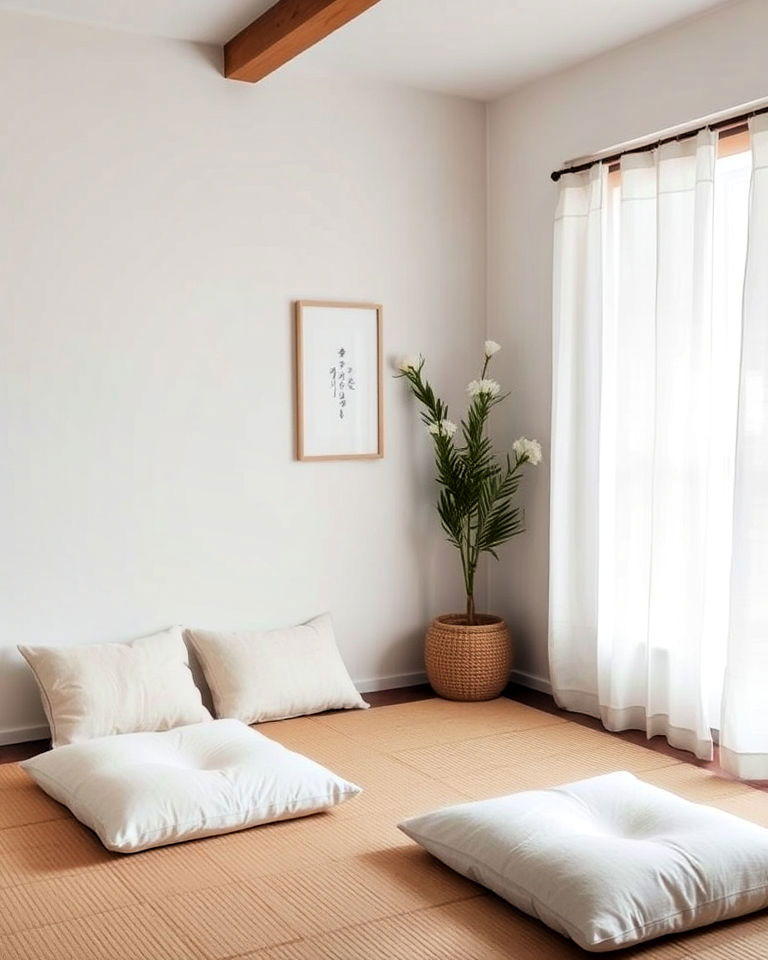
If you have space to spare, adding floor seating like low chairs or cushions creates a cozy and functional corner in your Japandi bedroom. This addition invites quiet reflection or reading while contributing to the minimalist aesthetic. Choose natural fabrics like cotton or linen to enhance the understated, earthy feel of the room, while echoing the Japanese tradition of sitting close to the ground.
5. Shoji Screens for Soft, Filtered Light
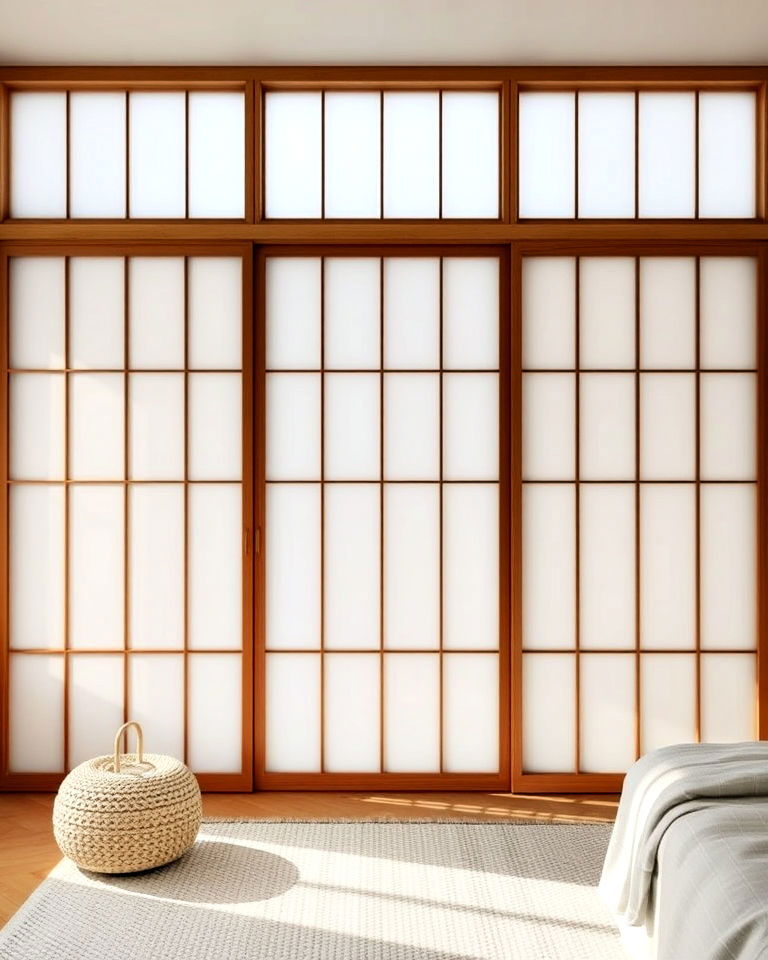
Shoji screens are a perfect way to divide space while allowing soft, filtered light to permeate the room. Their translucent panels and lightweight wooden frames add a subtle Japanese influence, blending seamlessly with Scandinavian design's emphasis on natural light. These screens also add a layer of texture and visual interest without overwhelming the space, maintaining the minimalist balance of the Japandi style.
6. Low Furniture for a Grounded, Spacious Feel
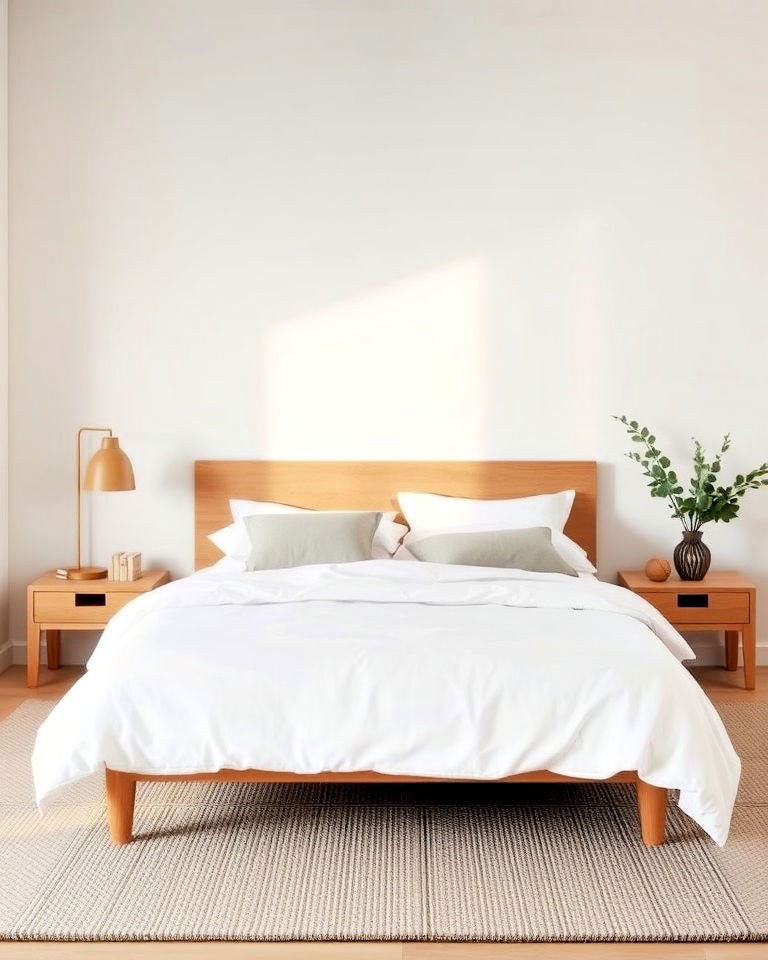
Explore bedroom layout ideas by embracing the tradition of low-sitting furniture with low-profile beds and side tables for your Japandi bedroom. This creates an open, grounded feeling that encourages relaxation. The low furniture pieces, paired with clean lines and natural materials, provide a sense of calm while making the space appear larger and more harmonious, aligning with both Japanese and Scandinavian design philosophies.
7. Decluttered Surfaces for a Clean Look
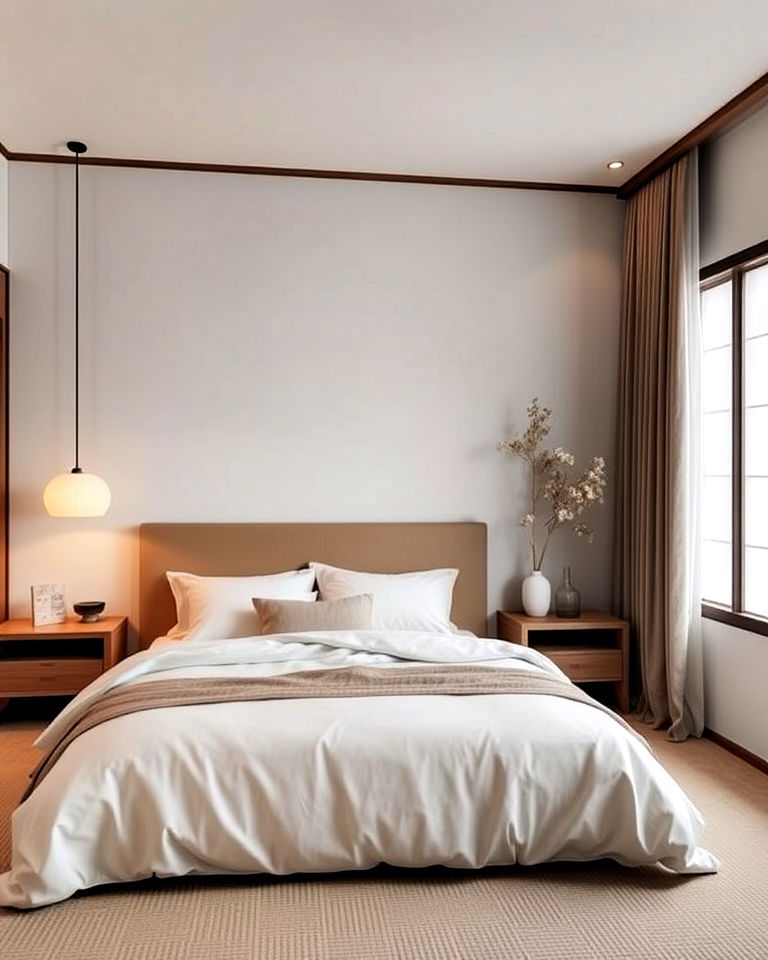
Create a tranquil Japandi-style bedroom blending Japanese and Scandinavian design. A key aspect of Japandi bedroom interior design is decluttered surfaces, which promote a sense of calm and clarity. In your bedroom, avoid over-decorating by limiting the number of items on bedside tables and dressers. Keep only essential objects and use stylish storage solutions to hide clutter. This approach echoes the minimalist aesthetic, helping to create a clean, open space that invites rest and relaxation.
8. Neutral Curtains for Softness
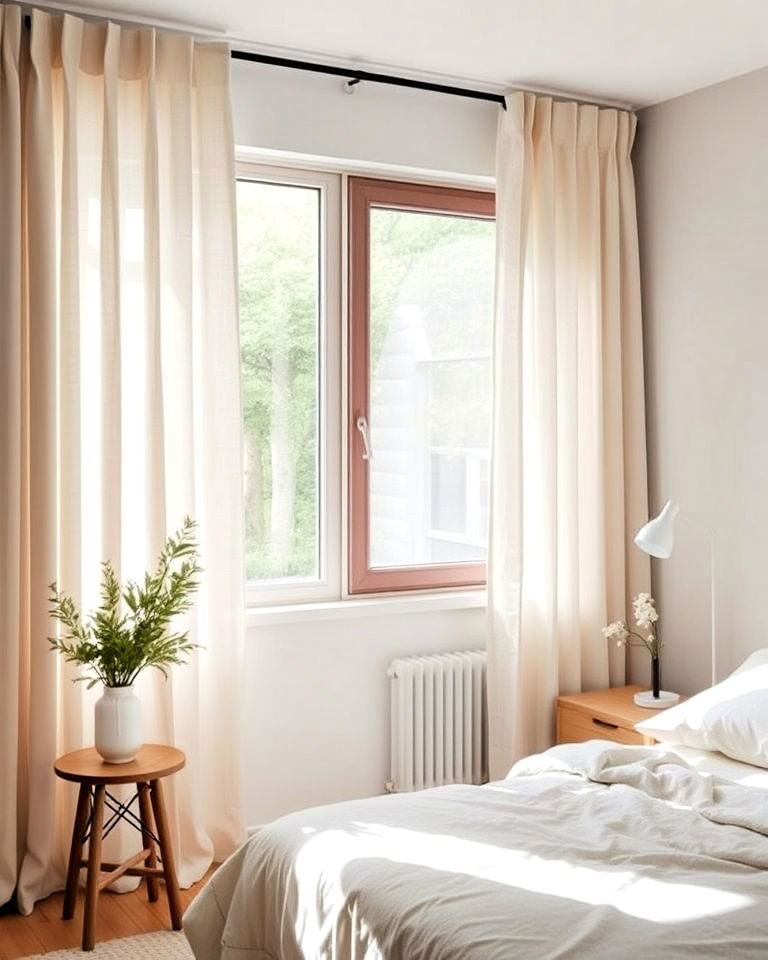
Opting for neutral-colored curtains in lightweight fabrics like linen or cotton adds softness to a Japandi bedroom without overwhelming the space. The flow of natural light, combined with simple, understated window treatments, enhances the room's serenity. Neutral curtains help maintain the balance between the minimalism of Japanese design and the warmth of Scandinavian style.
9. Wooden Accent Walls for Texture

Introduce texture to your Japandi bedroom with wood slat accent wall ideas for a natural and stylish touch. This feature adds depth and a natural, earthy quality that complements the minimalist aesthetic. A wooden wall behind the bed or along one side of the room can serve as a subtle focal point, harmonizing with the room's clean lines and soft color palette while connecting the space to nature.
10. Tatami Mats for a Traditional Japanese Touch
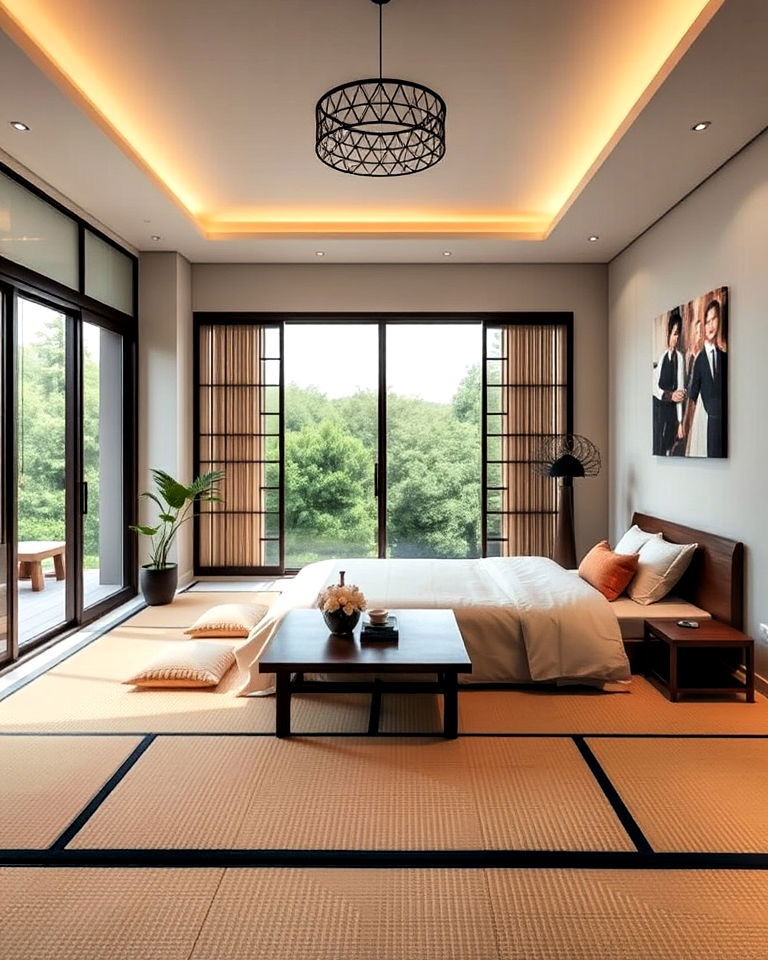
Tatami mats are a traditional Japanese element that can be integrated into a Japandi bedroom for a cultural touch. These woven straw mats can be used as an alternative to carpets or rugs, adding texture and warmth to the floor. Their natural material reinforces the connection to nature, while their understated look aligns with the clean, minimal lines of the overall design.
11. Paper Lanterns for Soft, Ambient Lighting
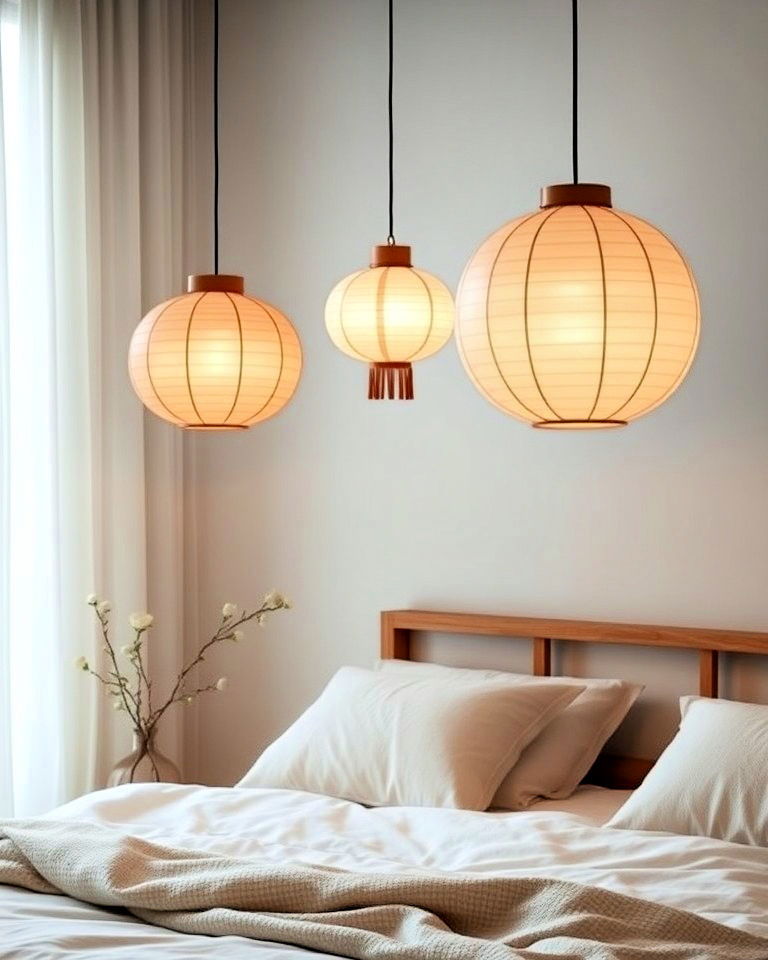
Incorporate paper lanterns or pendant lights with soft, diffused light for a warm and inviting atmosphere in your Japandi bedroom. The organic shapes and natural materials of these lighting fixtures create a soothing ambiance, perfect for relaxation. Paper lanterns also evoke Japanese design aesthetics, while their simplicity pairs well with Scandinavian minimalism.
12. Sliding Closet Doors for Clean Lines

Replace traditional hinged closet doors with sliding doors to maintain the clean lines and minimalist feel of a Japandi bedroom. Sliding doors, especially those made of wood or featuring shoji-like panels, offer a sleek, space-saving solution. They enhance the room's functionality and aesthetic appeal by minimizing visual clutter and promoting a streamlined look.
13. Indoor Plants for a Natural Element
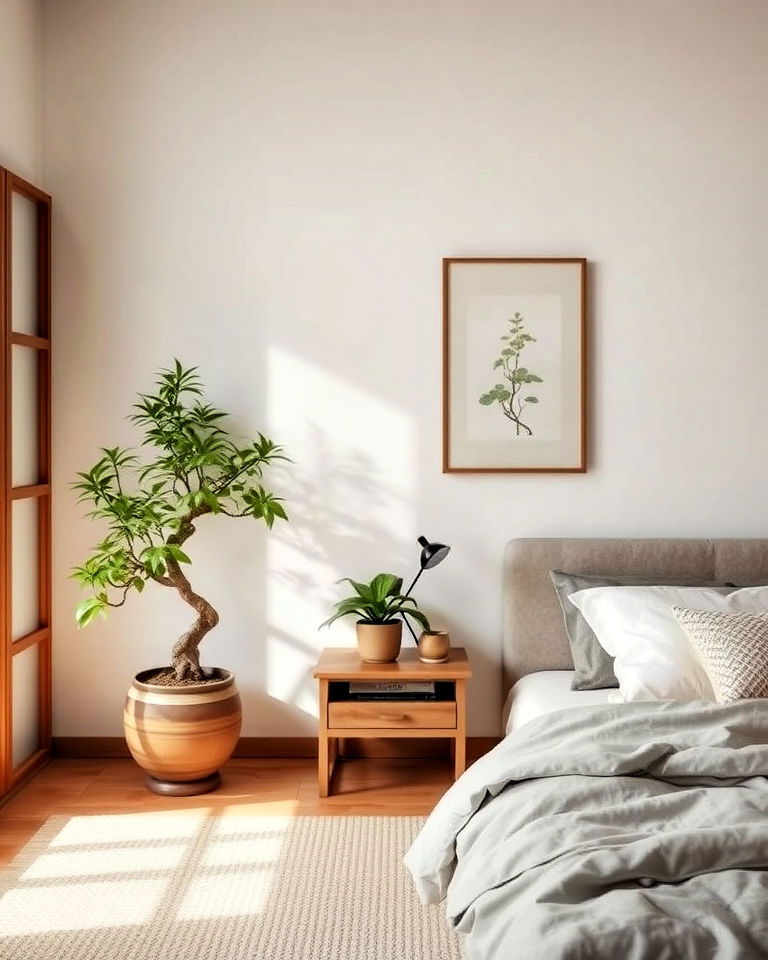
Transform your space with a Scandinavian Japandi bedroom for modern serenity. Adding a few carefully chosen indoor plants can breathe life into your Japandi bedroom. Plants like bonsai trees, ferns, or snake plants bring in natural beauty without overwhelming the minimalist aesthetic. Their calming presence not only enhances air quality but also reinforces the connection to nature, a cornerstone of both Japanese and Scandinavian design.
14. Simple Wall Art to Maintain Minimalism
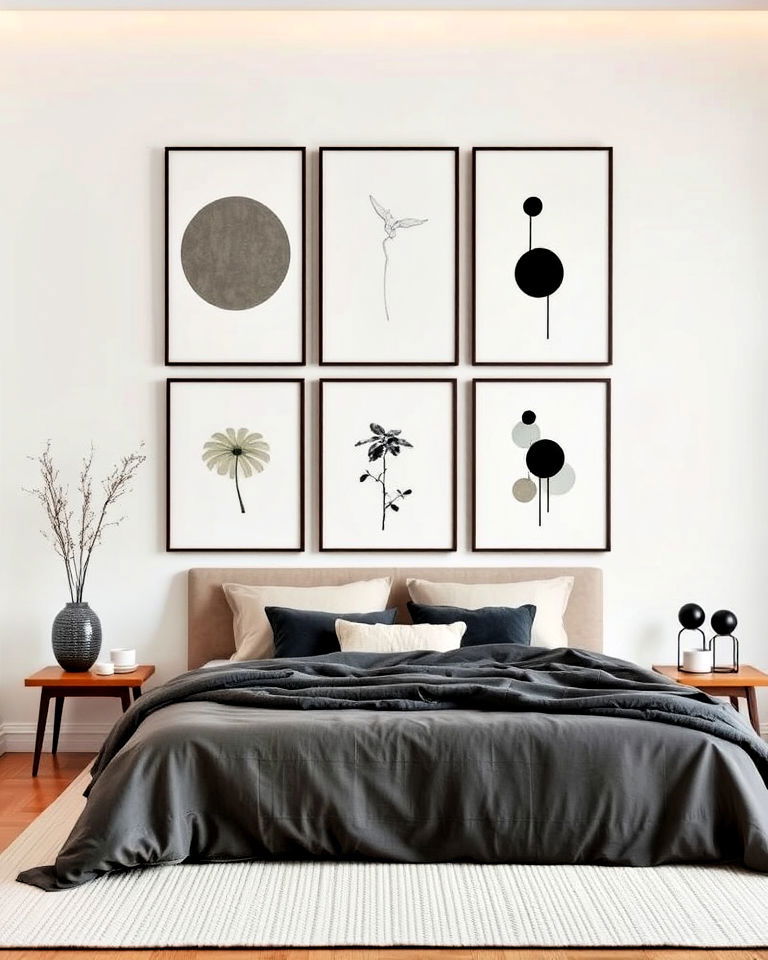
Opt for bedroom wall decor ideas with simple, understated art that complements the Japandi theme without detracting from its minimalist nature. Consider monochromatic prints, abstract shapes, or traditional Japanese ink paintings. This subtle approach ensures the art enhances the room's calm, neutral atmosphere without overpowering the space or introducing unnecessary complexity.
15. Linen Textiles for Comfort and Texture

Linen textiles, with their slightly rough texture and natural look, fit perfectly into a Japandi bedroom. Whether in the form of bedding, cushions, or throws, linen adds a cozy, lived-in feel while maintaining the minimalist aesthetic. Its organic material and neutral tones complement the earthy color palette and natural materials used throughout the room.
16. Open Shelving for Displaying Simple Decor
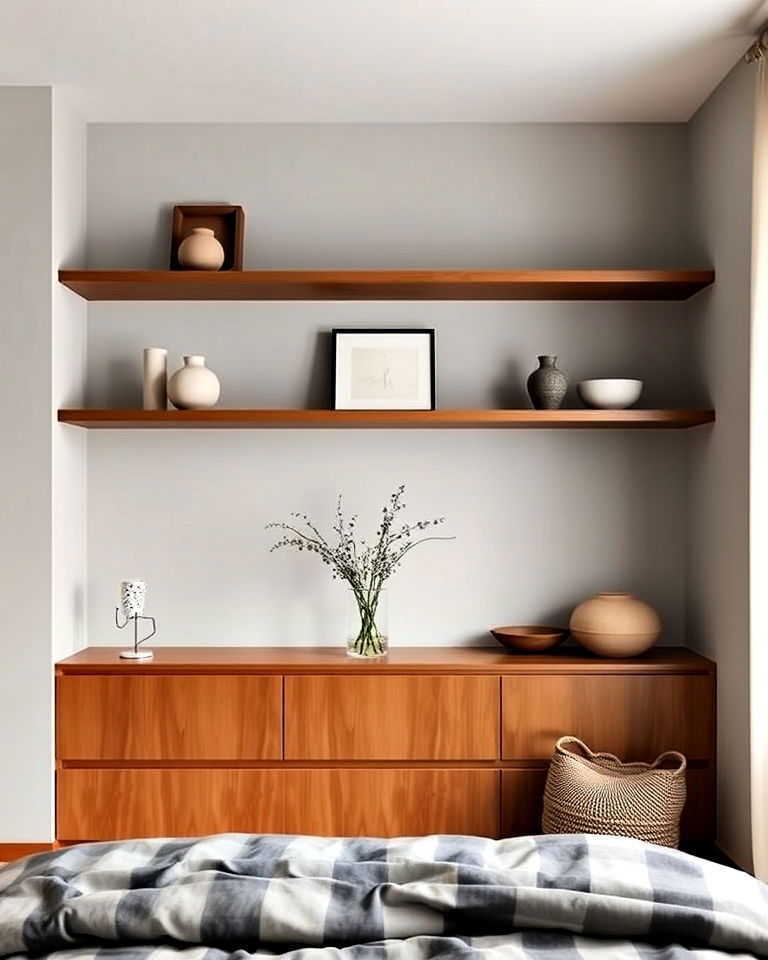
Opt for bedroom shelving ideas in your Japandi bedroom to display select decor items, such as ceramic vases or small plants, while maintaining a minimalist aesthetic. The clean lines of the shelves, paired with the simplicity of the displayed objects, keep the space uncluttered. This also allows you to showcase personal touches without overwhelming the room's peaceful ambiance.
17. Neutral Rug for a Cozy Foundation
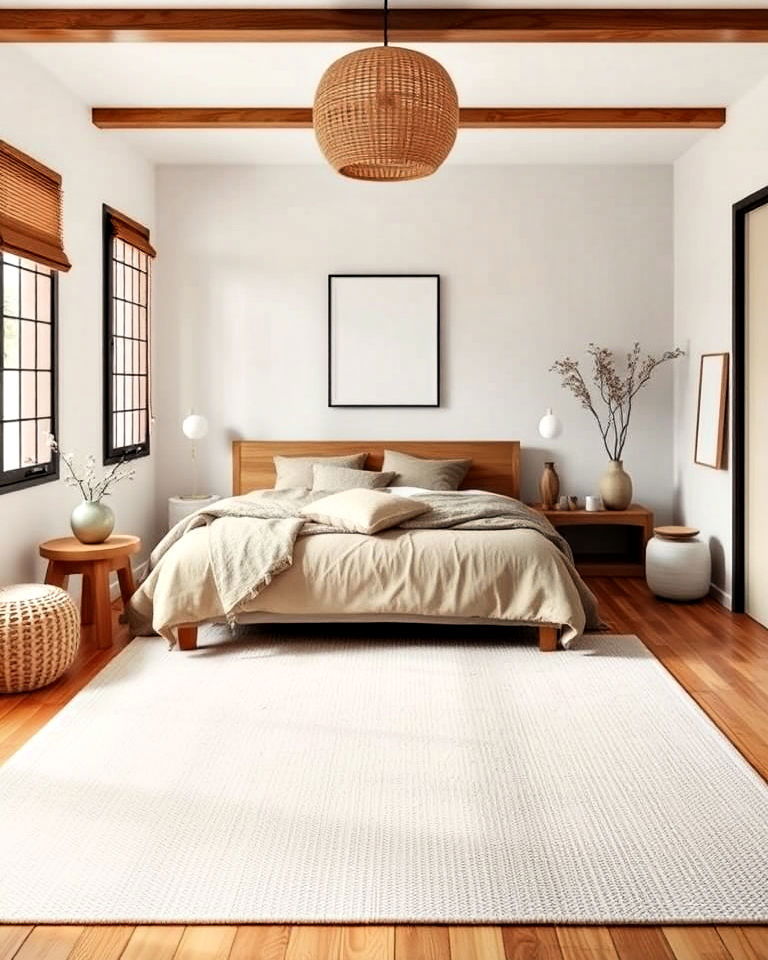
Adding a neutral-colored rug to your Japandi bedroom helps create a cozy foundation without distracting from the overall design. Choose a simple, solid rug in beige, cream, or gray to anchor the space and provide warmth underfoot. The understated design of the rug blends seamlessly with the minimalist and natural elements of the Japandi style, enhancing the room's comfort and calm.
18. Low-Profile Nightstands for Functionality
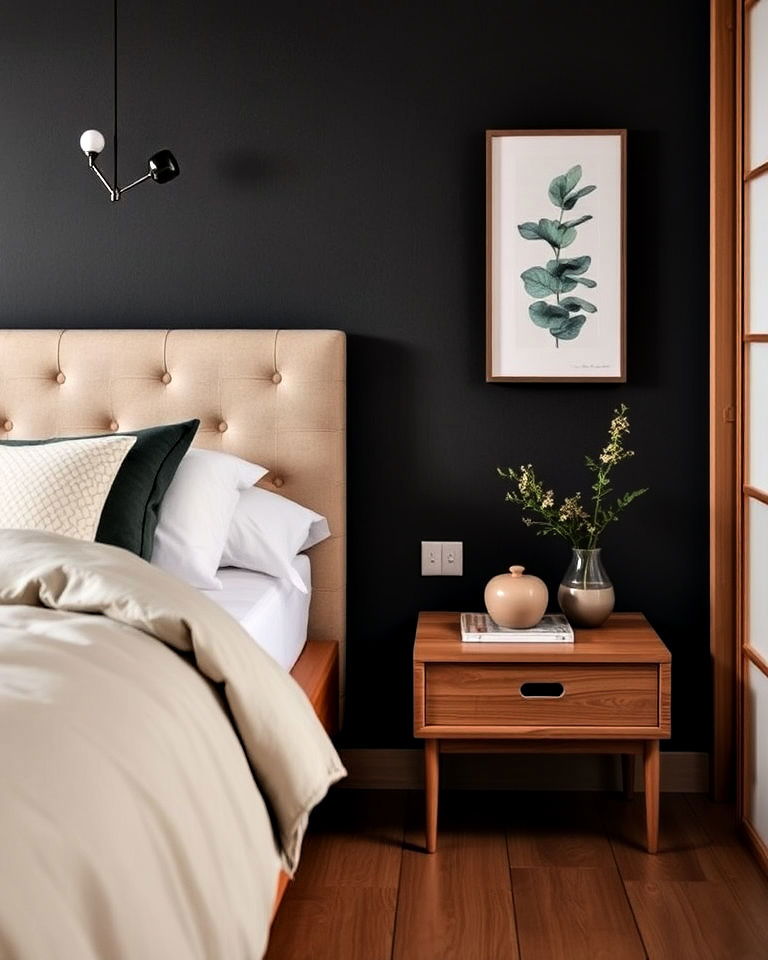
Incorporate low-profile nightstands that blend into the Japandi aesthetic while offering practical storage solutions. Wooden or bamboo nightstands with simple designs maintain the minimalist, grounded feel of the room, while providing functionality. The low height complements platform beds and helps maintain the clean, streamlined look that defines Japandi design.
19. Soft, Warm Lighting for a Relaxed Mood
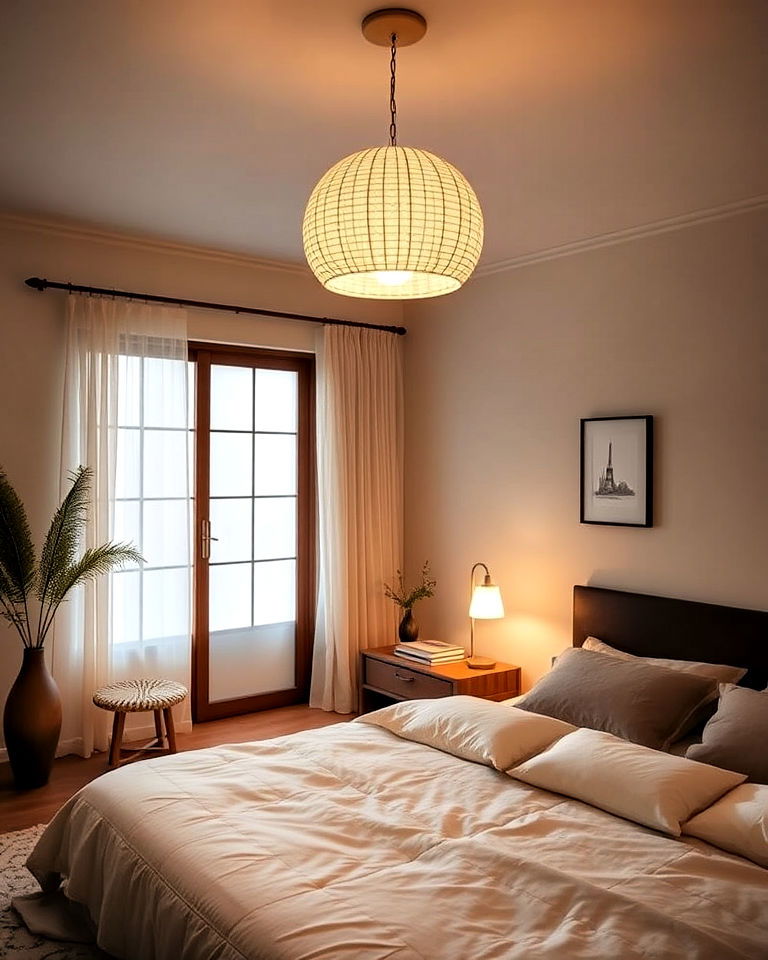
Design a peaceful Japandi room combining simplicity with natural textures. Opt for soft, warm bedroom wall sconce ideas in your Japandi bedroom to create a relaxed and inviting atmosphere. Light fixtures made from natural materials like wood, paper, or rattan help diffuse light gently, adding warmth without harsh shadows. The warm tones of the lighting enhance the cozy, peaceful feel of the space, making it perfect for unwinding at the end of the day.
20. Wall-mounted Storage to Save Space
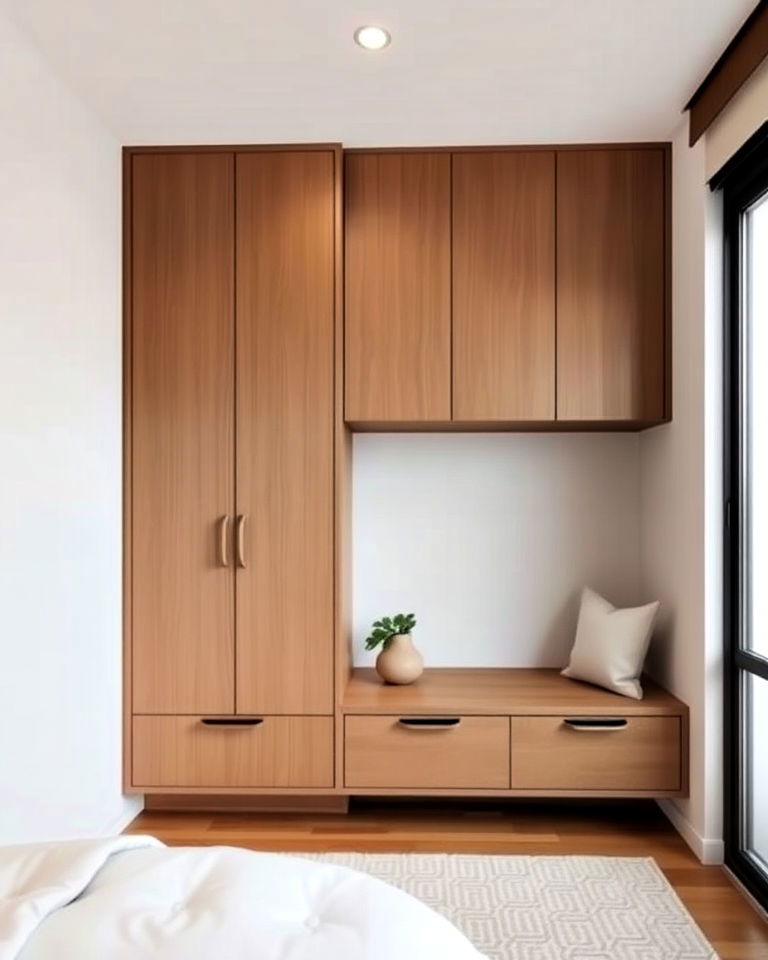
In small Japandi bedrooms, wall-mounted storage solutions help maximize floor space while maintaining a sleek, minimalist look. Floating shelves, hanging organizers, or wall-mounted cabinets provide storage without cluttering the room. These functional elements maintain the clean lines and simplicity of Japandi design, keeping the room both practical and aesthetically pleasing.
21. Muted Accent Colors for Subtle Contrast
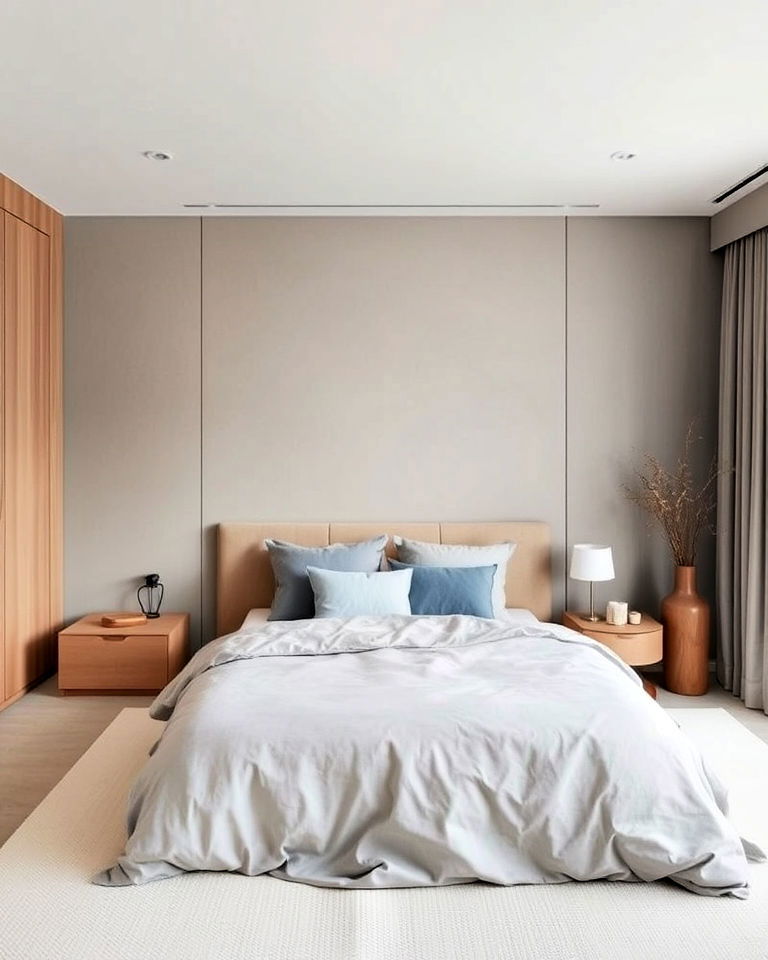
While neutral tones dominate Japandi interiors, adding muted accent colors like green and beige bedroom ideas or earthy rusts can create subtle contrast. Muted tones, such as grey and yellow bedroom ideas, introduced through bedding, pillows, or art, add warmth and interest without overwhelming the minimalist aesthetic. Muted accents maintain the room's calm and serene atmosphere while offering a touch of visual variety.
22. Minimalist Window Treatments for Natural Light
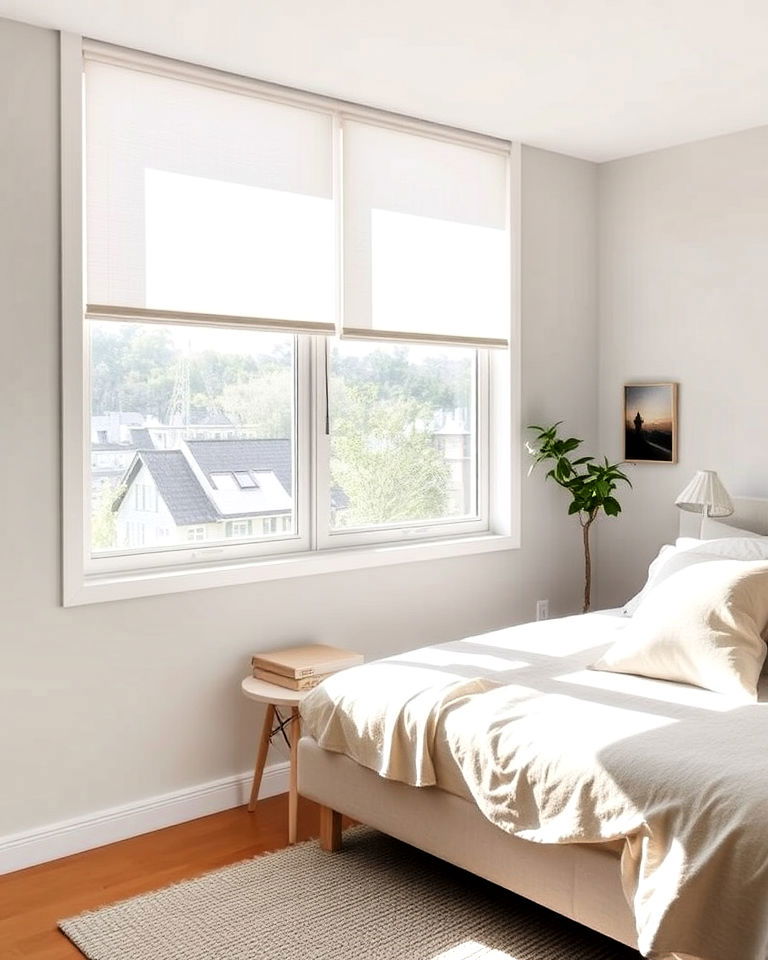
Minimalist window treatments like simple roller shades or sheer curtains allow ample natural light to filter into your Japandi bedroom. Natural light is a key element in both Japanese and Scandinavian design, as it creates a bright, airy environment. Keeping the window treatments simple ensures they don't detract from the room's calm and open feel.
23. Textured Throw Blankets for a Cozy Layer
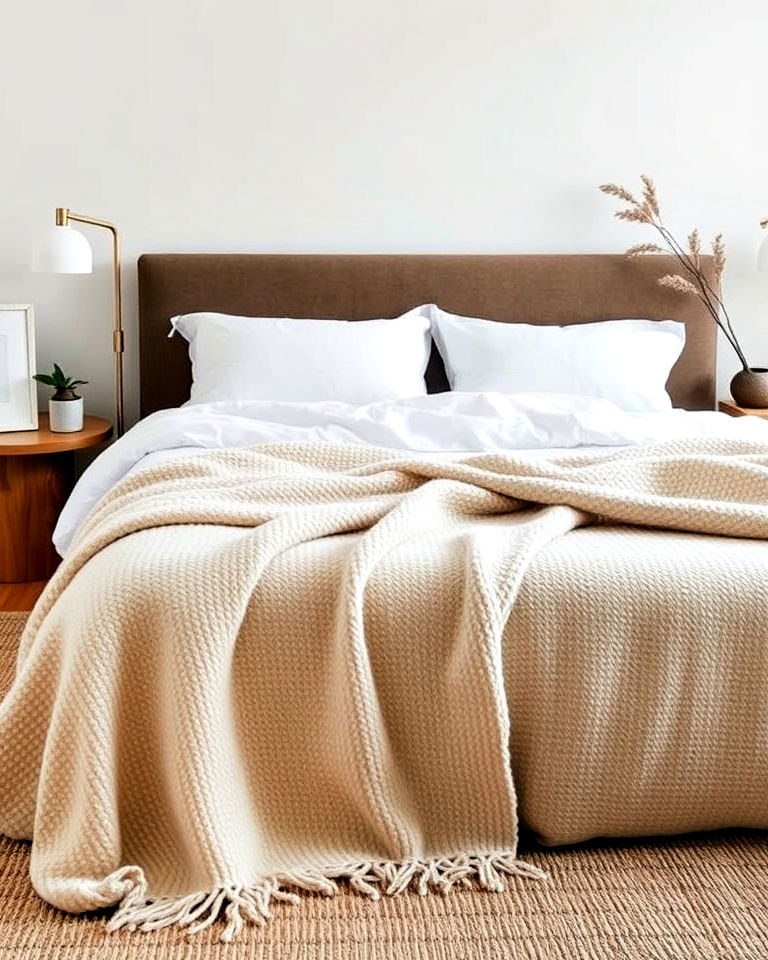
Add a cozy layer to your Japandi bedroom with textured throw blankets made from natural fibers like wool or cotton. Draping a blanket over the bed or a chair adds visual interest and warmth without compromising the room's minimalist style. The texture of the throw also enhances the room's comfort, making it feel more inviting and lived-in.
24. Built-In Wardrobes for Seamless Storage

Elevate your space with a Japandi interior design bedroom for a harmonious aesthetic. Opt for built-in wardrobes that blend seamlessly into the walls of your Japandi bedroom for a clutter-free look. These wardrobes, designed with simple, clean lines and neutral colors, keep storage hidden while maintaining the minimalist aesthetic. Built-ins maximize space without adding bulk, ensuring that the room remains open and peaceful.
25. Zen Meditation Corner for Mindful Relaxation

Create a Zen meditation corner in your Japandi bedroom with a low cushion or floor mat, a small table, and a few carefully chosen accessories. This peaceful space can be used for meditation, yoga, or quiet reflection, reinforcing the room's overall sense of calm. The simple, uncluttered design of the corner complements the Japandi style, providing a mindful retreat within your home.
Conclusion:
By incorporating natural materials, muted tones, and minimalist furnishings, Japandi bedroom design transforms your space into a calming oasis. This design philosophy emphasizes simplicity, functionality, and the beauty of understated elegance. Whether you're embracing low-profile furniture, using soft lighting, or integrating natural elements like wood and stone, Japandi bedrooms create a peaceful atmosphere that promotes relaxation and well-being. For those looking to create a minimalist yet warm retreat, these Japandi bedroom design ideas offer the perfect blend of modern and timeless beauty.
Key Points:
- Simplicity and Minimalism: Japandi design emphasizes clean lines, uncluttered spaces, and functional decor that promotes tranquility.
- Natural Materials: Wood, bamboo, stone, and linen are essential to creating the earthy, calming atmosphere of a Japandi bedroom.
- Neutral, Earth-Toned Palette: Muted colors like beige, gray, and soft earth tones help establish a warm, inviting environment.
- Low-Profile Furniture: Beds and nightstands that sit low to the ground provide a sense of spaciousness and grounding.
- Soft Lighting: Warm, ambient lighting, often through paper lanterns or natural materials, enhances the peaceful mood.
- Connection to Nature: Incorporating elements like indoor plants or wooden accents strengthens the room's connection to nature.
- Decluttered Surfaces: Maintaining minimal decoration and clutter-free spaces fosters a peaceful, organized atmosphere.
What to Do Next:
- Start by decluttering your bedroom, removing unnecessary items to create a clean, open space.
- Introduce natural materials like wood, stone, or linen into your decor, either through furniture or accessories.
- Opt for soft, neutral colors in your bedding and walls to set a calming tone.
- Replace heavy or ornate lighting with softer, natural alternatives such as paper lanterns or warm-colored bulbs.
- If possible, introduce plants or elements of nature to deepen the relaxing, earthy ambiance of the room.



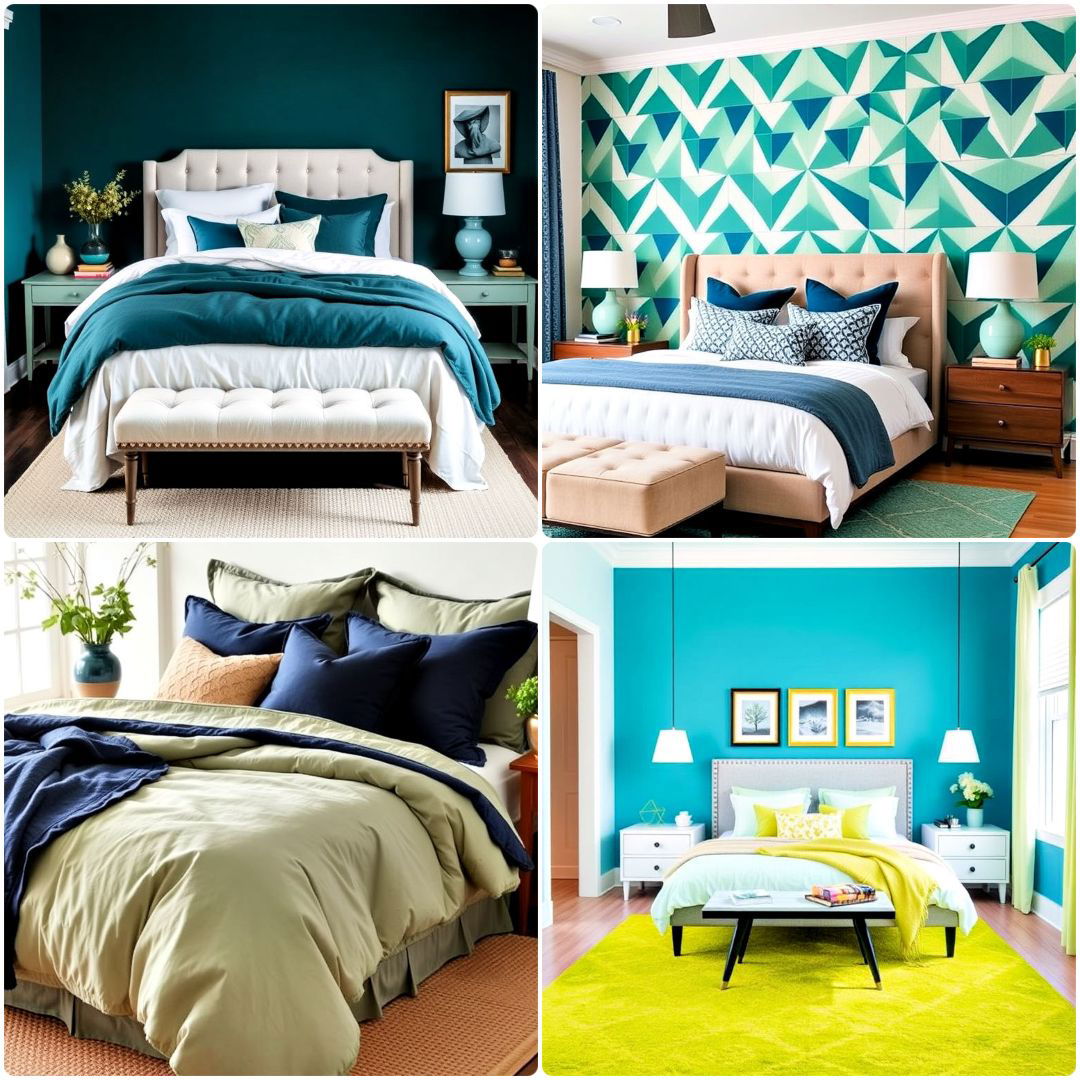


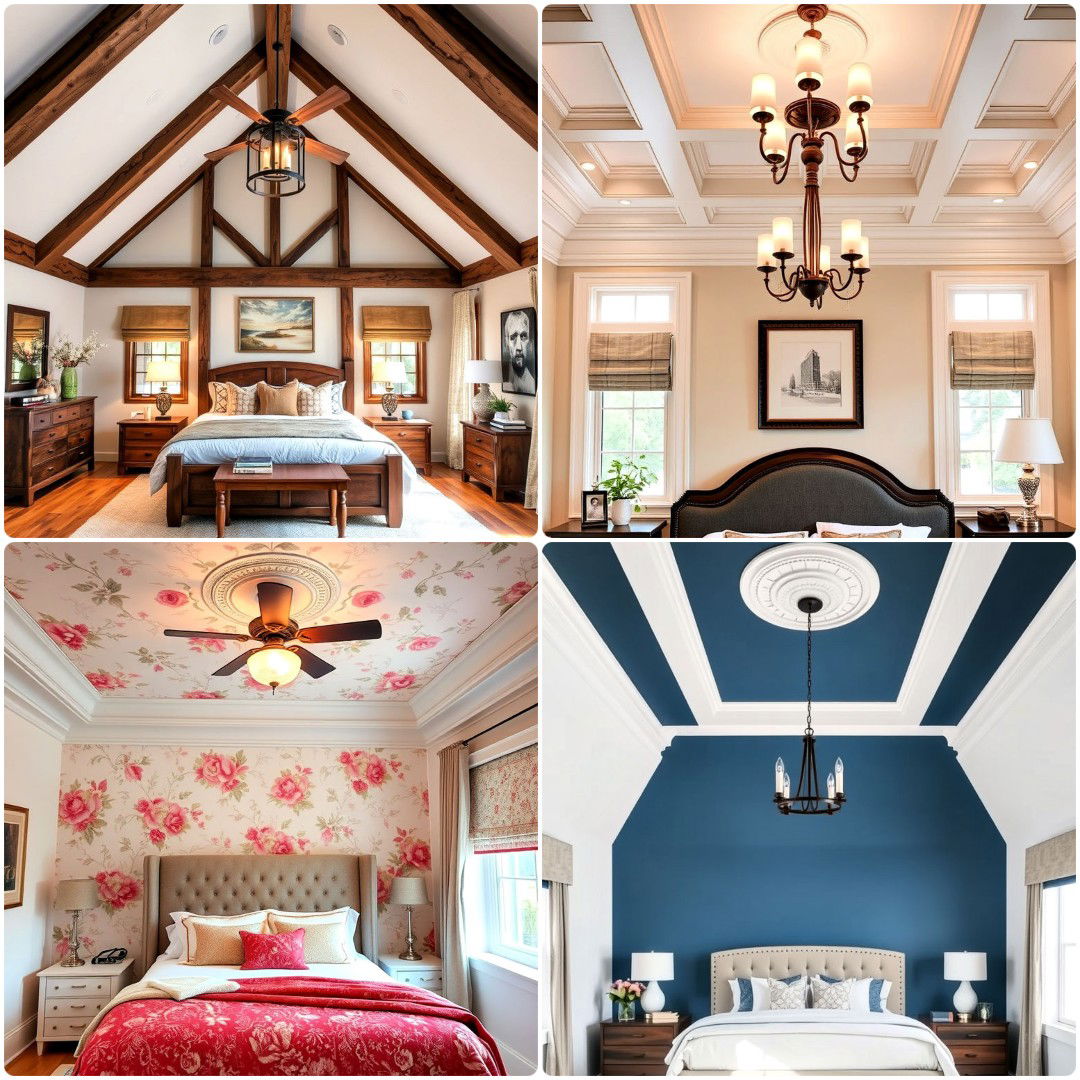

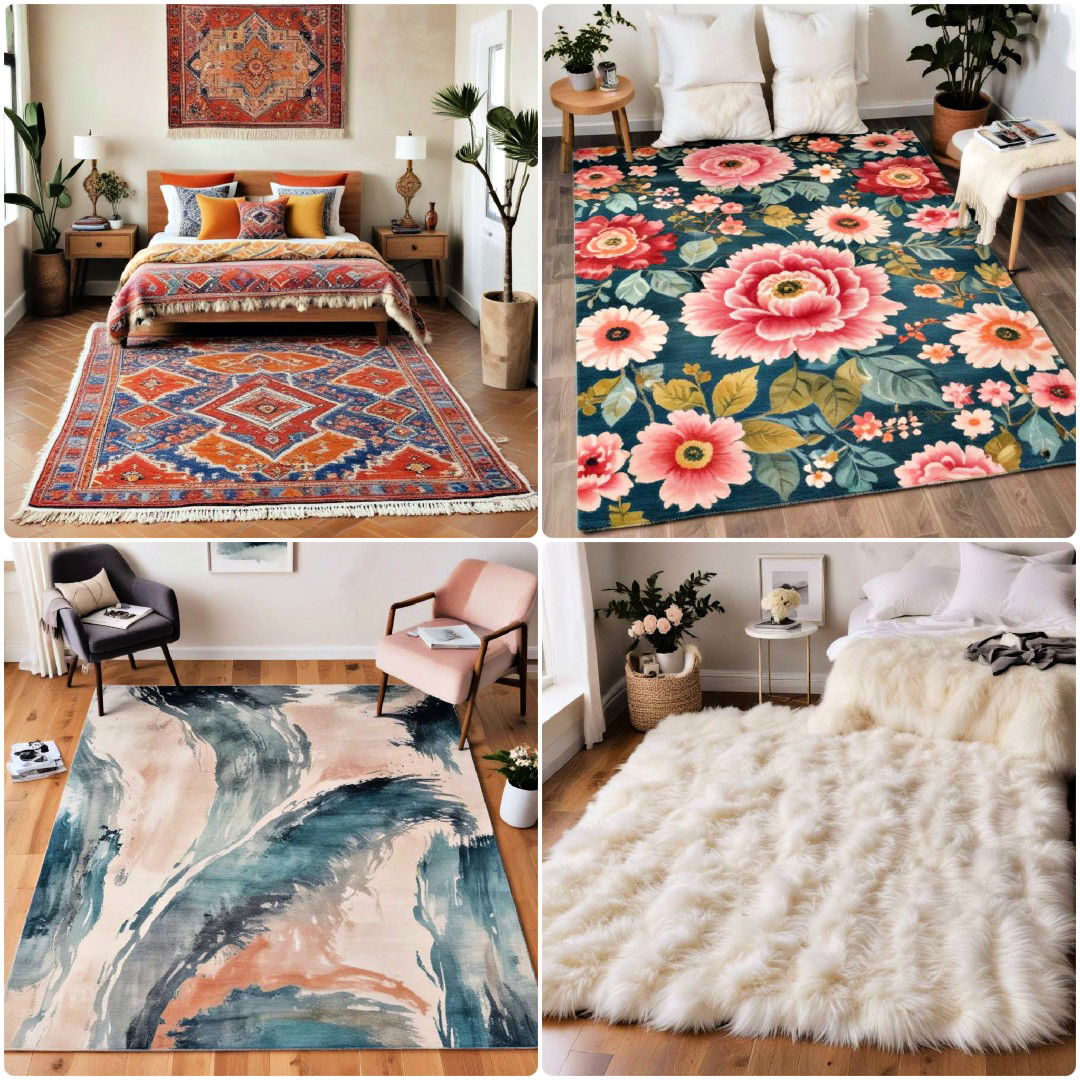
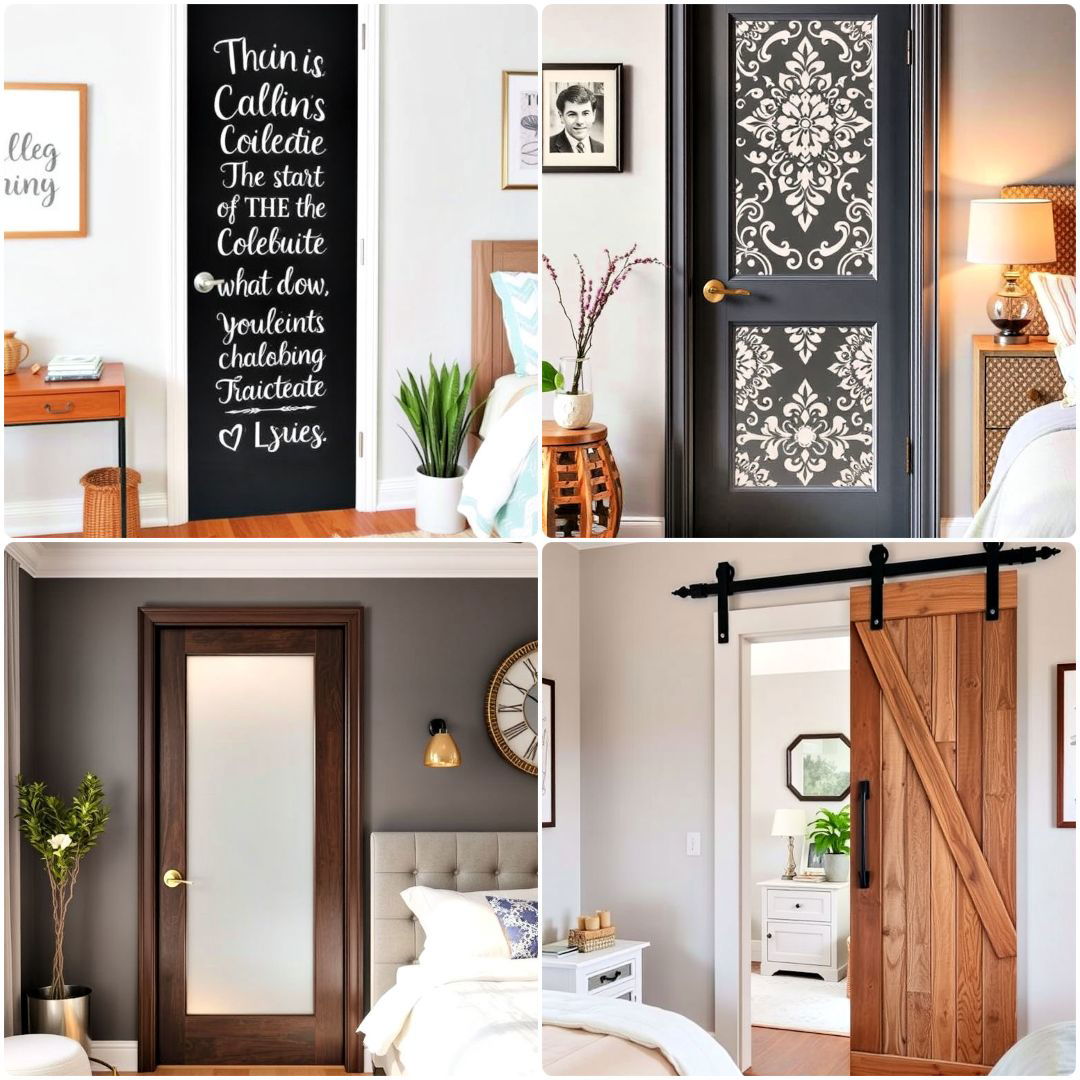




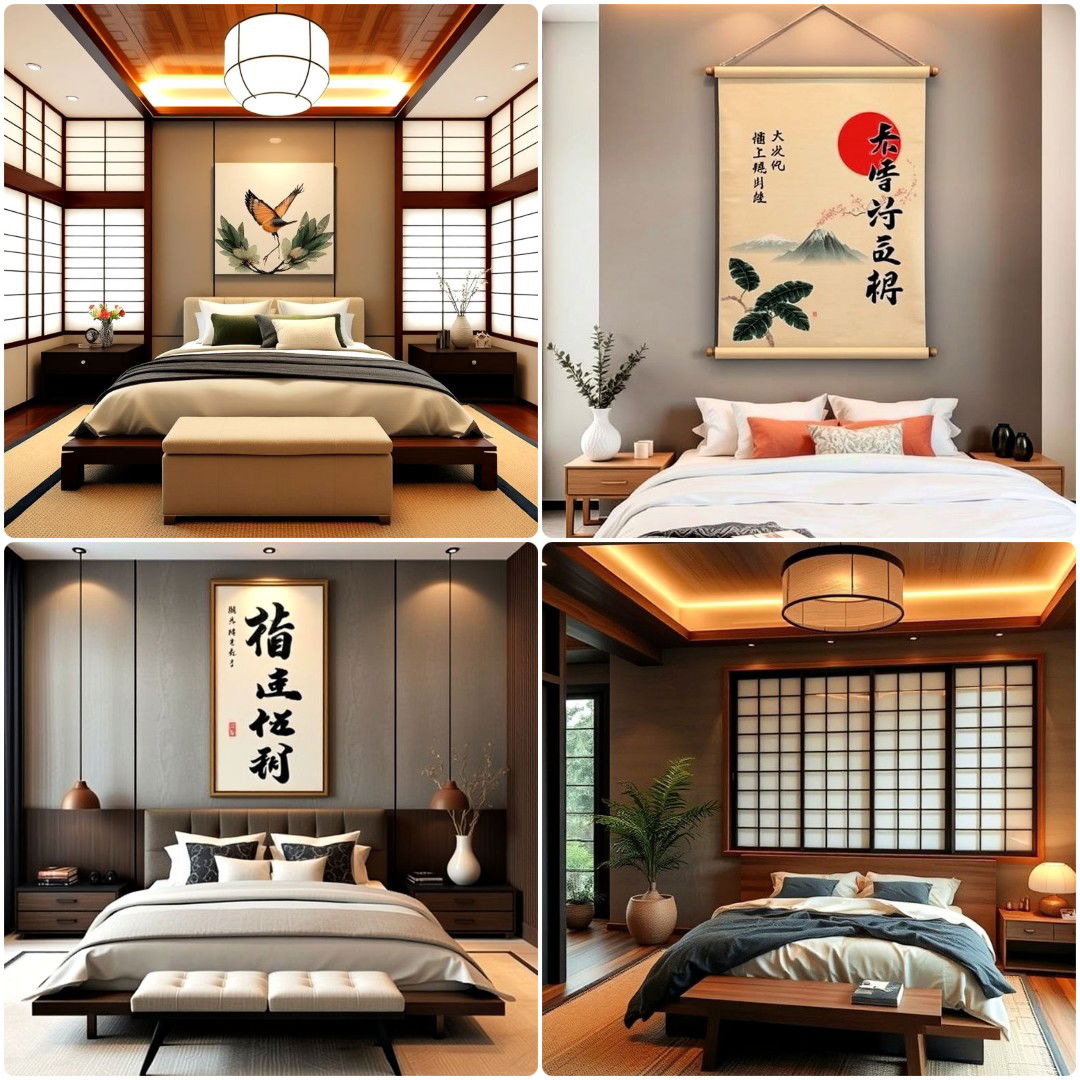

Leave a Reply